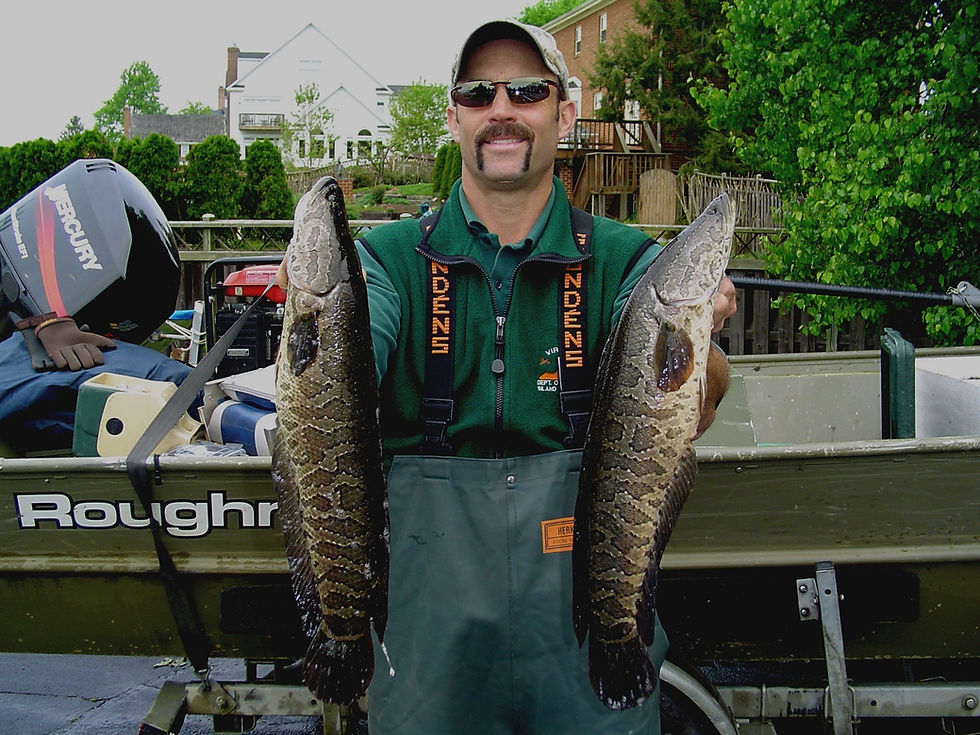Northern Snakehead Impacts on Fisheries: Biologists Reaching Differing Conclusions
- By Ken Perrotte
- Dec 12, 2019
- 2 min read
Updated: Nov 9, 2020

TODAY, SOME 17 years after northern snakehead fish were discovered in a Maryland pond and a Virginia tidal creek, the toothy fish that resembles a bowfin but sports a scale-pattern resembling some snakes is found in just about every one of the Chesapeake region’s main tributaries.
They are driving a burgeoning bowfishing industry. Anglers have figured out that they’ll readily wallop a topwater lure, such as an artificial frog. You can even sell their firm, flaky flesh to restaurants in Maryland
Researchers want to know more about the fish and its potential impacts on existing species, including favored gamefish such as largemouth bass and panfish such as crappie and bluegill.
When snakeheads were first found in some of our tidal creeks, many worried this apex predator, originally native to the Yangtze River basin in China, would decimate the competition, greatly altering our fisheries. States enacted strict laws, requesting anglers kill and report any snakeheads they caught.
A recently released study conducted by biologists with the U.S. Fish and Wildlife Service and Maryland Department of Natural Resources indicates snakeheads are negatively affecting fish populations in areas they inhabit.
The study by Joshua J. Newhard and Joseph W. Love assessed fish populations at two locations near the Blackwater National Wildlife Refuge in Dorchester County Maryland. Fish population surveys taken in 2006 and 2007 were compared to data collected from surveys in 2017 and 2018. Snakeheads were first reported in the Blackwater River drainage in 2012.
Since the surveys began in 2006, 35 different species (32 fish and 3 invertebrate) were captured. Of 21 species that were captured both pre- and post-snakehead arrival, 17 declined in their relative abundance, including black crappie, white perch and bluegill. In addition, five of six sites sampled had significantly different fish communities after arrival of the snakeheads.
It definitely sounds ominous. But not so fast, other researchers argue. A research study in Virginia yielded different results. See the Fredericksburg Free Lance-Star for the rest of the story.




コメント